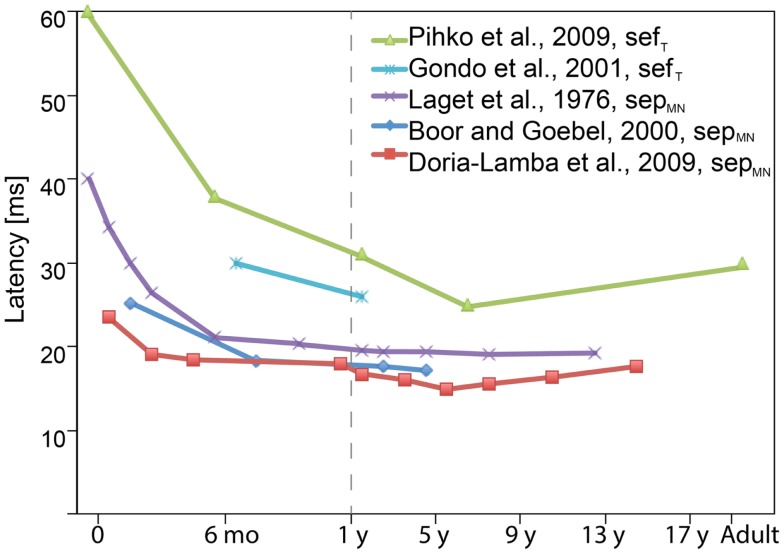Figure 3.
Schematic diagram showing the latency evolution of the earliest cortical sepMN30 and sefT30 components with age as reported in various studies. The general rule is that the sepMN30 and sefT30 latency decreases until the age of approximately 3–5 years, and slightly increases thereafter. The absolute latencies vary between studies due to differences in, e.g., stimulation methods and filter settings. Many of the studies also grouped subjects of different ages together in which case the figure displays the midpoint of the reported age range (when the average age was not reported). (Note the different age scales before and after 1 year.)

